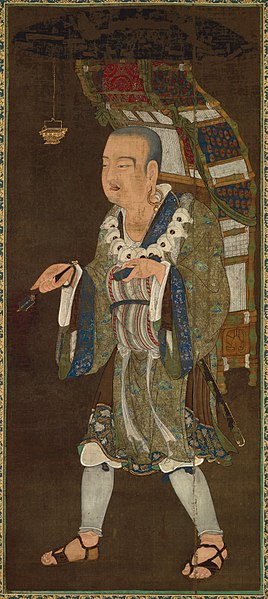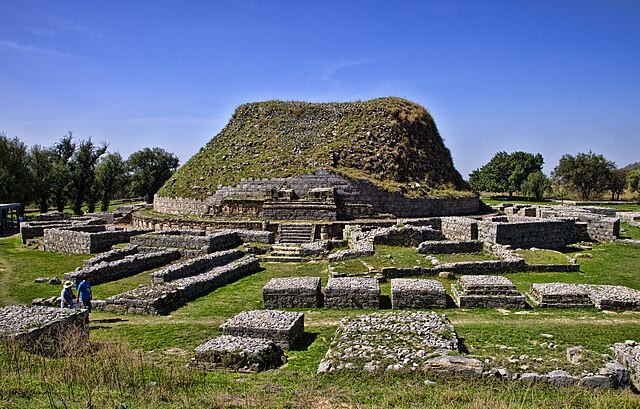Great Tang Records on the Western Regions
The Great Tang Records on the Western Regions is a narrative of Xuanzang's nineteen-year journey from Chang'an in central China to the Western Regions of Chinese historiography. The Buddhist scholar traveled through the Silk Road regions of what is today Xinjiang in northwest China, as well as neighboring areas in Central Asia and south China. Beyond these Chinese locations, Xuanzang also travelled around the perimeter of India, as far south as Kanchipuram. Xuanzang's travels demarcate not only an important place in cross-cultural studies of China and India, but also cross-cultural studies throughout the globe. The text is set up as both an account of Xuanzang's religious pilgrimage as well as his report of the surrounding towns and provinces of Tang China.
A page from an edition collected in 1773–1782
Xuanzang, born Chen Hui / Chen Yi, also known by his Sanskrit Dharma name Mokṣadeva, was a 7th-century Chinese Buddhist monk, scholar, traveler, and translator. He is known for the epoch-making contributions to Chinese Buddhism, the travelogue of his journey to India in 629–645 CE, his efforts to bring over 657 Indian texts to China, and his translations of some of these texts. He was only able to translate 75 distinct sections of a total of 1335 chapters, but his translations included some of the most important Mahayana scriptures.
Painting of Xuanzang. Japan, Kamakura period (14th century).
Xuanzang describes colossal Buddhas carved into the rocks of Bamiyan region (above: 19th-century sketch, destroyed by the Taliban in 2001).
Xuanzang describes thousands of monasteries and stupas in northwest India. Above: the ruins of Dharmarajika stupa, Taxila.
Xuanzang describes Ganges river with blue waters, who heretics believe carries "waters of blessedness", and in which a dip leads to expiation of sins.





